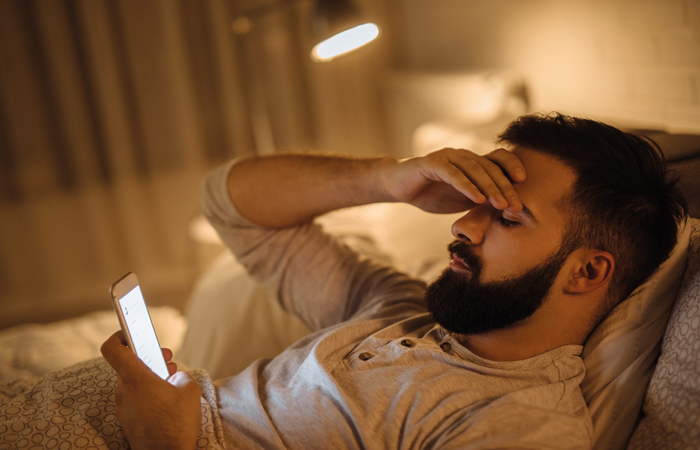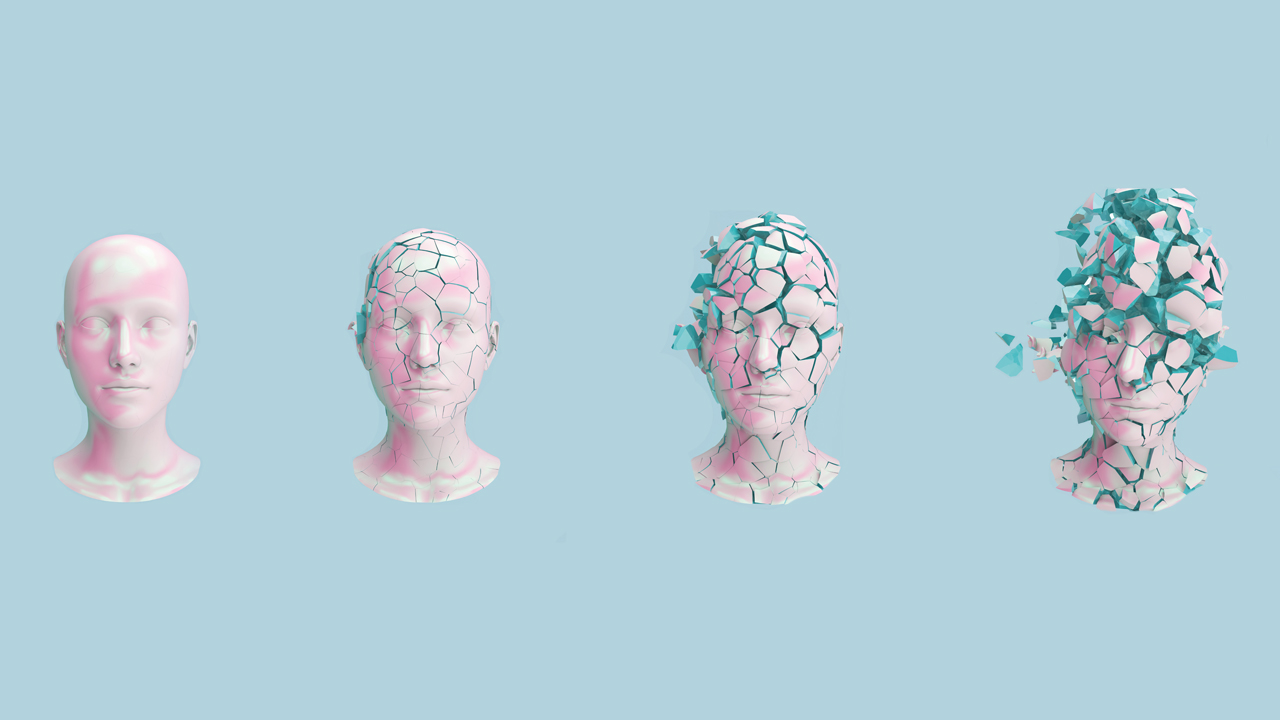In Conditions
Follow this topic
Bookmark
Record learning outcomes
There’s no denying the past few years have been tense. From the pandemic to the cost-of-living crisis, the ‘new 20s’ haven’t exactly got off to a roaring start.
So perhaps it’s hardly surprising that tension-type headache (TTH) continues to be one of the most prevalent health complaints of our time.
The scale of the problem is staggering: an analysis for the 2016 Global Burden of Disease study, published in The Lancet, estimated that nearly three billion people worldwide were affected by tension-type headache (1.89 billion) or migraine (1.04 billion). While there are differences between the two conditions, they can both be a real pain for patients. By learning more about them, there’s lots you can do to help.
What the different headaches?
As pharmacy staff, it’s important to understand the distinctions between TTH and migraine. “Tension-type headache is often described as a vice-like band of tension around the head,” says Dr Rebecca Walker, GP and headache specialist for the National Migraine Centre (nationalmigrainecentre.org.uk).
It occurs “as a mild to moderate pain that is present on both sides of the head and is not aggravated by routine activity or movement,” explains Ria Bhola, headache nurse specialist at The Migraine Trust (migrainetrust.org). “People will often describe it as a pressing or tightening pain.
“Migraine attacks, on the other hand, occur with several associated features such as sensitivity to light, noise, smell and movement. The pain is typically throbbing and accompanied by nausea (with or without vomiting), and it is moderate to severe in intensity. The attacks last between four and 72 hours, untreated. Migraine symptoms are more debilitating and disruptive to regular function.
“Tension-type headaches are largely ‘featureless’. Both types of headache are primary headache disorders, meaning they are not caused by another underlying condition.”
Tension headaches last for at least 30 minutes, according to the NHS, and sometimes for several days. Common triggers can include stress, sleep problems (such as insomnia) or caffeine.
“Nearly three billion people worldwide were affected by tension-type headache”
How can you help?
For example, through relaxation techniques such as breathing exercises, avoiding stressful situations as much as possible, or speaking to a counsellor or therapist.
Drink plenty of water throughout the day to avoid dehydration
For example by going for a walk, doing yoga or having a massage
If neck tension or neck pain may be contributing to the headaches
Sleeping too much and lack of sleep are both potential headache triggers.
When to refer
Tension headaches are common, affecting most of us at some time in our lives, and many will soon ease up. However, according to WHO, around one to three per cent of adults experience chronic TTH, occurring on more than 15 days per month.
The NHS advises that people should see a GP if they have several headaches a week or if they are severe, painkillers do not help, they have a throbbing pain at the front or on one side of their head, or they feel sick, vomit and find light or noise painful.
“Red flag symptoms include sudden onset, severe headache; for example, the headache associated with subarachnoid haemorrhage is described as a ‘thunder clap’ headache, or like being struck on the back of the head with a cricket bat,” says Dr Rebecca Walker, GP and headache specialist for the National Migraine Centre.
“Others include a change in the nature of pre-existing headaches, new neurological symptoms and signs (such as persistently blurred vision), a headache worsened by coughing, exercise or position. For example, a headache that is worse on lying down and which is relieved when standing could be a sign of raised intracranial pressure.
“A new headache in someone who is over the age of 50, or who has additional systemic symptoms, for example weight loss, night sweats or those of an infection, or in someone who has other conditions such as immunosuppression or pregnancy should be investigated.
“This list is by no means exhaustive, and if you are concerned, you should advise your customers to seek an urgent medical assessment via the GP, through 111 if out of hours, or via Accident and Emergency.”
More on migraine
It’s estimated that around 10 million adults in the UK are affected by migraine, according to the National Migraine Centre – that’s about 15 per cent of the population. This painful, debilitating disorder can have a major impact on a patient’s life, yet is commonly misunderstood. “As a charity supporting people with migraine, we see people struggling to access good migraine care every day, and regularly see people who have been struggling for many years,” reveals Dr Walker. “The condition is often unrecognised, both by individuals and their health care practitioners, or it is stigmatised as ‘just a headache’.”
While common triggers can include stress, sleep disturbance, hormone changes, dehydration and missed meals, the exact cause of migraines remains unknown. “Whilst not fully understood, it is known that during a migraine attack, the brain does not process sensory information correctly and this susceptibility is due to a combination of genetic and environmental factors,” says Ria.
“Migraine is a complex condition involving genetics, neurotransmitters, inflammatory proteins and hormones, and we still have much to learn about it,” explains Dr Walker. “Recent advances in our understanding have shown that it is an inflammatory condition, the genesis of which involves calcitonin gene-related peptide. The identification of the role of this neuropeptide in migraine attacks has formed the basis for the development of our first, migraine-specific treatments, which are transforming the lives of many patients.”

“Around 10 million adults in the UK are affected by migraine”
Types of migraine
So what are the main types of migraine? “The most common is migraine without aura, which accounts for about 70 per cent of cases,” says Dr Walker. “The next is migraine with aura. Less common types include vestibular, where the most bothersome symptom is vertigo, and migraine aura without headache amongst other rarer types.
“Aura is an episode of neurological symptoms that lasts for a short period of time, usually 15 minutes to an hour, and often resolves before the start of migraine headache. It might be zig-zag lights disturbing vision, difficulty finding or expressing words, or numbness and tingling in limbs.
“Migraine is described as ‘episodic’ when the beginning and end of attacks are easy to recognise and when there are a good number of migraine-free days in between attacks. Sometimes the condition changes into ‘chronic’ migraine, which is when migraine days number more than half the month on a regular basis.”
Attacks happen in phases, so patients may present with different symptoms at different times. The early phase “might involve subtle symptoms such as feeling thirsty, yawning frequently or feeling irritable,” says Dr Walker. “Symptoms in the acute phase include nausea, vomiting and headache. People are sensitive to stimuli from the world around them – to light, sound, smells and movement. The nature and severity of headache can vary from person to person, but is often one-sided, throbbing and disabling severe. People who experience migraine tend to feel tired and washed out after an attack, and often describe it as a ‘hangover’ during the recovery phase.”

Migraine management
Pharmacy staff can play a key role in supporting patients by being aware of the different treatment options and their contraindications. “If people can take nonsteroidal anti-inflammatory drugs (NSAIDs), these are the go-to medicines for acute migraine – for example, soluble aspirin, or ibuprofen,” says Dr Walker. “Soluble medicines get into the system quickly.
“When taken with a prescribed anti-sickness and pro-kinetic medication like metoclopramide, this can be very effective combination for aborting an attack of migraine. When people can’t take nonsteroidal anti-inflammatories, for example, because they have NSAID sensitive asthma or stomach sensitivity, soluble paracetamol is a good alternative, which can also be combined with metoclopramide.
“Triptans are migraine-specific acute treatments. There are several available and they come in different formulations, including tablets, melts, sprays and injections. Sumatriptan is available over the counter.” For more details see: nhs.uk/medicines/sumatriptan.
Dr Walker continues: “Two important take-home messages when thinking about taking over-the-counter or prescribed medicines for migraine:
- Medicines taken to relieve the symptom of headache should be used for under 10 days per month to minimise the risk of developing medication overuse headache
- Codeine, and products containing codeine, should be avoided for the treatment of migraine. People can become quickly dependent on codeine, it can contribute to the development of chronic headaches, and it is also one of the hardest medicines to stop taking once on this slippery slope.”
As well as helping the patient find the right pain relief for them, pharmacy staff can discuss self-care steps for managing attacks and trying to prevent future ones. “During an attack, people prefer lying down in a quiet space with limited lighting, noise and smells,” says Ria. “Avoiding routine activity and movement helps, and some find cold or hot packs soothing. Non-invasive neuromodulation devices such as sTMS or Cefaly can be helpful but incur a cost.”
“Lifestyle steps are essential for good migraine care and underpin the effectiveness of all the treatments, both acute and preventative, that we have to offer our patients,” says Dr Walker. “Migraine brains like routine, so keeping regular sleep hours, making sure you are well hydrated, making sure that you are eating healthily but also regularly are all important. Regular gentle exercise is helpful, and perhaps the hardest lifestyle measure to manage and minimise is stress, both personal and work-related. Our charity website has a wealth of information on this topic.”
“A headache diary is useful and can help with spotting patterns or trends for triggers (e.g food, what events were going on, stage in menstrual cycle for women, late night, etc),” says Rebecca Wicks. “And screen time can be a big contributor to headache and migraine, so regular breaks, turning down brightness, using dark mode and switching
off devices 90 minutes before bed where possible could all help.”
“Screen time can be a big contributor to headache and migraine”
Treatment update
This January, the National Institute for Health and Care Excellence (NICE) announced that eptinezumab (Vyepti) has been approved for use within the NHS in England for the treatment of episodic and chronic migraine, and the following month the Scottish Medical Consortium (SMC) followed suit. So what is this treatment, and who stands to benefit?
“Eptinezumab is a calcitonin gene-related peptide (CGRP) monoclonal antibody that is given as an intravenous infusion, delivered over half an hour, every three months,” says Ria Bhola, headache nurse specialist at The Migraine Trust. “The CGRP antibodies are a new migraine-specific group of treatments that target this neuropeptide which is released by the trigeminal sensory nerves during a migraine attack. The treatment works by neutralising the CGRP effect of this neuropeptide, is generally well tolerated and works as a migraine preventive treatment. They are beneficial because they target the migraine process and have minimal side effects.”
“It is another option for those patients who have not found a good response to the other anti-CGRPs and migraine treatments,” says Dr Rebecca Walker, GP and headache specialist for the National Migraine Centre. “The self-injectable medications need to be refrigerated which can make it difficult for people if they are travelling for work or holidays. Having a three-monthly infusion could help to get around this. Eptinezumab might also be useful for people who have a disability that means that they cannot administer auto-injections themselves, or if they are needle phobic and want to reduce their exposure to needles.”
So who will be eligible? “Based on the NICE criteria, a patient who has failed [to respond to] at least three prior preventive treatments and has migraine on four or more days per month can be offered this option by a specialist,” says Ria. “It will involve attendance at a clinic or hospital setting and maintaining a headache diary to measure its effect.”
“I cannot give a percentage, but there will definitely be a cohort of patients who will benefit from this, so it is great that it is now available,” adds Dr Walker.

